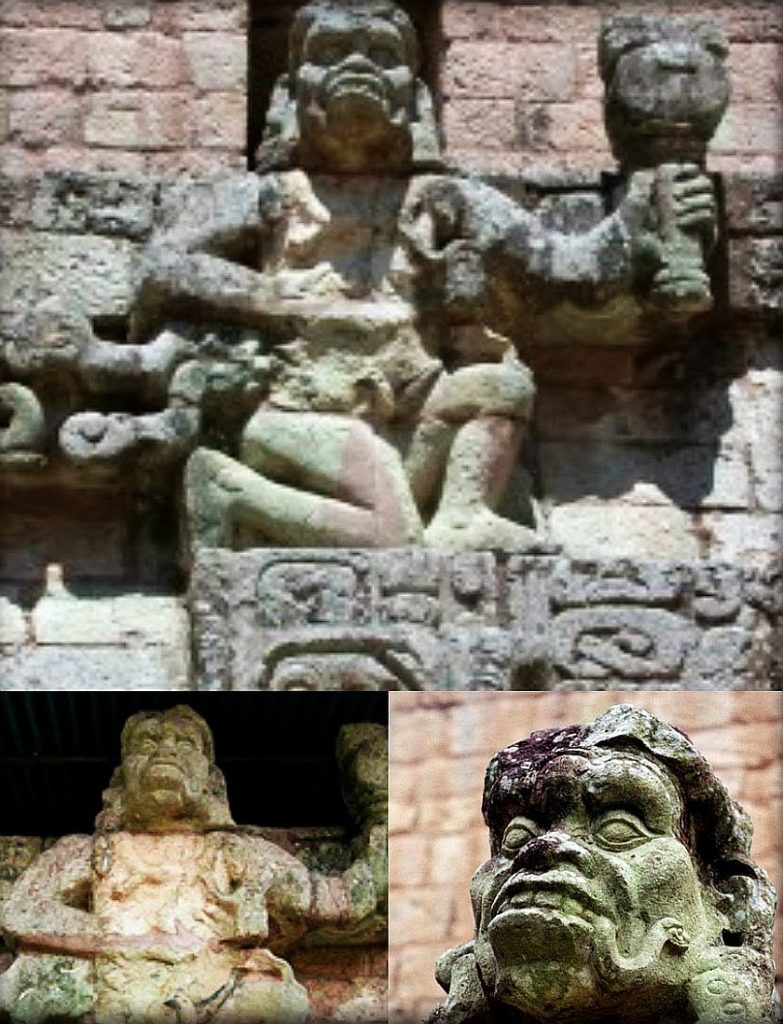Charles Lindberg, during one of his flights over the jungles of Mosquitia in Hondurus, claimed caught a glimpse of what he thought was the ‘Lost City of the Monkey God‘ where, legend says that local people worshipped huge ‘Monkey Sculptures‘.
Theodore Morde – an American adventurer, worked on the tip given by Lindberg and claimed that he had finally found the lost city in 1940.
He claimed sacrifices were made by local Indians to a gigantic idol of an ape. However, he was killed by a car in London before he could announce its exact location.
Morde had originally been looking for the White City, a hidden refuge of gods and gold first reported by Hernan Cortez.
Researchers from the University of Houston and the National Center for Airborne Laser Mapping flew over the Mosquitia region and revealed that there is evidence of a plaza dotted with ancient pyramids now reclaimed by the jungle on the east end of Hondurus. On the western end of Hondurus is the city of Copan – the site of the ancient Howler Monkey God statue.
This monkey god resembles Hanuman from Indian Epic poem Ramayana, with mace in hand and monkey face.

Ramayana’s Kishkinda Kanda descibes about Trident of Peru, South America etc and Yuddha Kanda(War Episode) describes about Hanuman travelling to Paatala Loka (Central America and Brazil, which are on other side of India in globe) and meeting his son Makaradhwaja.
After killing the King of Paatala, Hanuman appoints a new ruler and makes his son Matsyavallabha or Makaradhwaja as protector to the ruler of that kingdom people of that kingdom started worshipping Hanuman as God since then.
This could be one of the reasons why ancient americans of central and south paint red color to all their gods statues (similar to Hanuman idols smeared in reddish orange).
The discovery of Vedic Havan Kund in peru is also one more evidence of Vedic influence in this region.
After his expedition, Morder described traveling miles through swamps, up rivers, and over mountains before coming across ruins that he interpreted as the remains of a walled city. He claimed to have evidence of large, ruined buildings and said that his Paya guides told him that there once was a temple with a large staircase leading to a statue of a “Monkey God.”
Morde speculated that the deity was an American parallel to the Hindu deity Hanuman, who he says was the equivalent of America’s own Paul Bunyan in his amazing feats of strength and daring.
Morde was told that the temple had a “long, staired approach” lined with stone effigies of monkeys. “The heart of the Temple was a high stone dais on which was the statue of the Monkey God himself. Before it was a place of sacrifice.
The steps to the dais were said to have been flanked by immense balustrades. “At the beginning of one was the colossal image of a frog; at the beginning of the other a crocodile.”
He also said the guides told him the city had been inhabited by the Chorotegas (extinct Oto-Manguean language people) “a thousand or more years ago“.
Morde also related a story about a monkey who had stolen three women with whom it bred, resulting in half-monkey half-human children. He claimed, “The native name for monkey is Urus, which translates literally into ‘sons of the hairy men.’ Their fathers, or fore-fathers, are the Ulaks, half-man and half-spirit, who lived on the ground, walked upright and had the appearance of great hairy ape-men.
Morde and Brown brought back thousands of artifacts, most of which became part of the collection of the Heye Foundation Museum of the American Indian in New York City.
These included metal razors, stone blades, a flute, stone statuary, and stone utensils. Morde and Brown also reported having found evidence of gold, silver, platinum, and oil and are now at display in National Museum of the American Indian in Washington, D.C.
Morde tried to return to Honduras in 1941 for further expedition but could not and eventually committed suicide for unknown reasons in 1954.
Later, journalists and authors have associated Morde’s “City of the Monkey God” with La Ciudad Blanca.
Source:BooksFact
Image Courtesy: Detecheter
You may also like
-
India Can’t Afford to Remain Stagnant at this Juncture, Says PM Modi; Asks People to Buy Locally-Made Goods
-
Stolen Artefacts to be Returned to India from Scotland Museums
-
Netaji’s Hologram Statue at India Gate
-
10th Century Stone Idol of Goat Head Yogini IllegallyRemoved from A Temple in Lokhari, Banda, UP Being Returned to India
-
UNESCO Inscribes ‘Durga Puja in Kolkata’ on the Representative List of Intangible Cultural Heritage of Humanity
